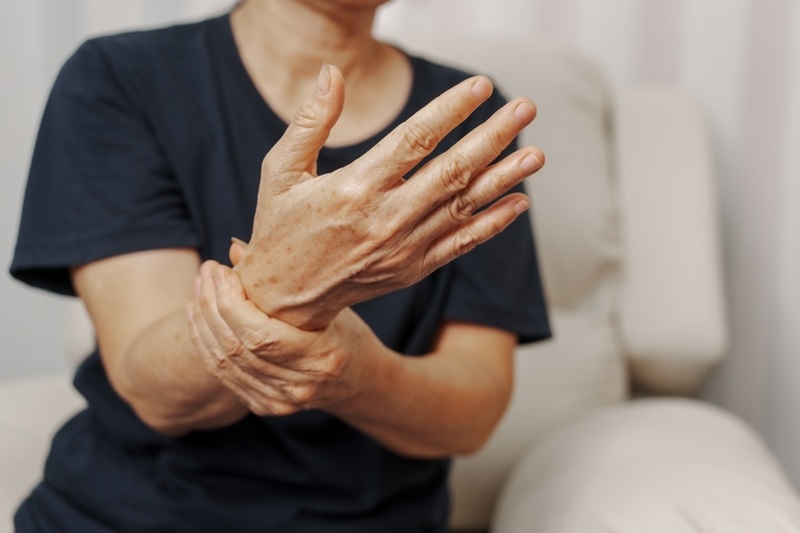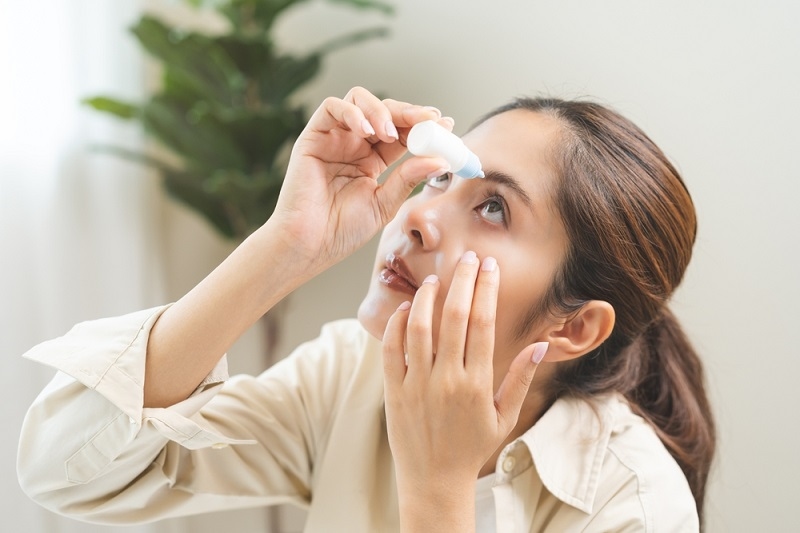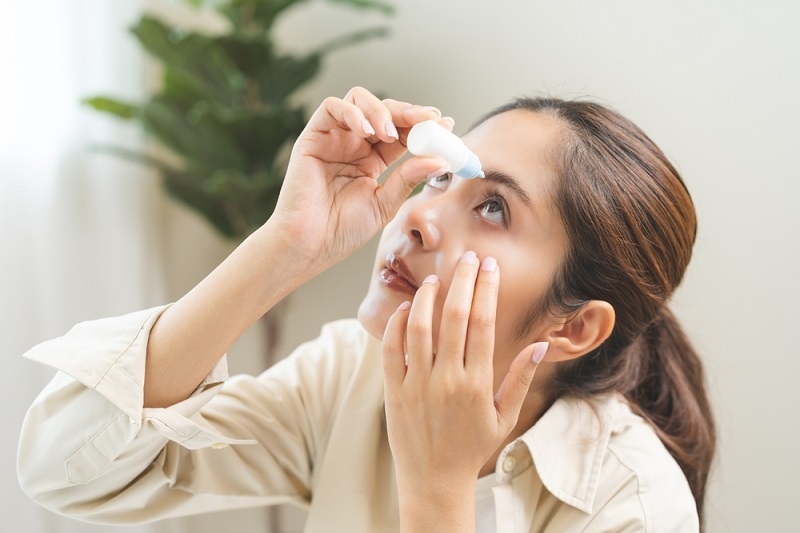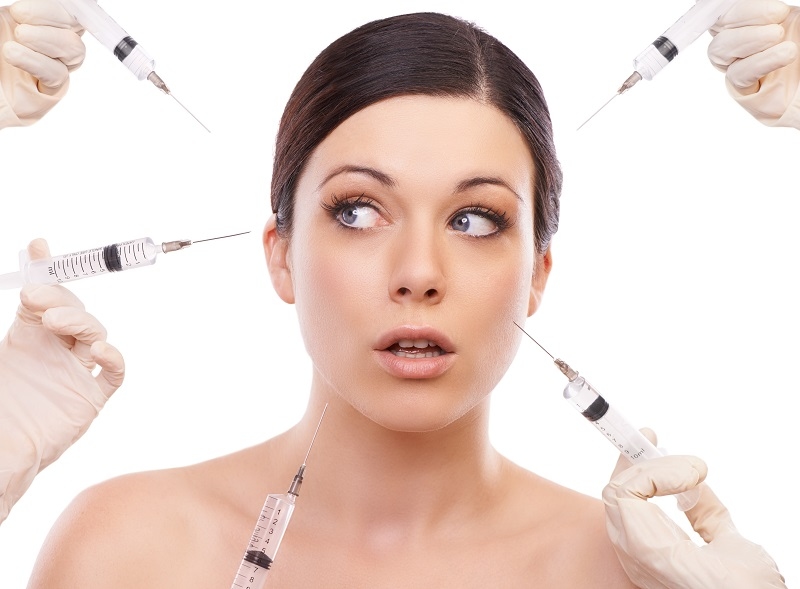Trending Articles
More Articles

Understanding Hay Fever: Triggers, Signs, and Relief
Let's clear one thing up first: what is hay fever? Despite the name, it's not caused by hay and it doesn't give you a fever. Hay fever, also called allergic rhinitis, is your body's overreaction to things in the air that shouldn't bother you, pollen, dust mites, pet dander, or mold. When these particles hit your nose, eyes, or throat, your immune system treats them like invaders. In response, it releases chemicals like histamine, which lead straight to the itchy, sneezy mess we call hay fever.Millions of people deal with it every year. For some, it shows up during spring and summer when pollen levels are high. For others, it sticks around all year thanks to indoor allergens. Either way, understanding what is hay fever is the first step toward handling it better.What Causes Hay Fever?If you've ever wondered what causes hay fever, the short answer is: your immune system misfires. Usually, your body gets defending you from real threats such as viruses or bacteria. However, in the case of hay fever, it ends up setting innocent airborne particles as something dangerous. This is where the whole chain reaction starts-histamine release followed by swelling of blood vessels and increased secretion of mucus.What brings about hay fever depends on the variety you have:In seasonal hay fever: pollen from trees, grass, and weeds set it off, and therefore symptoms increase especially in spring or fall. Perennial hay fever: Sticks around all year, usually thanks to indoor culprits like dust mites, mold, cockroaches, or pets.There is a genetic predisposition. You are more likely to get hay fever if allergies run in your family. The environment also plays a role-very long pollen seasons, changing climate, and poor air quality seem to be worsening allergies for many persons. Essential Reading: Understanding What Is Lupus & Identifying its Early SignsCommon Hay Fever TriggersKnowing your hay fever triggers is half of the battle. Some are crystal clear while others creep up on you. Here goes:Outdoor triggers:Tree pollen in early springGrass pollen in late spring and summerWeed pollen in late summer and fallMold spores-especially in a damp and humid atmosphereIndoor triggers:Dust mites lurking in bedding, carpets, or furnitureAnimal dander - tiny scales and droplets of saliva from cats, dogs, or any furry petMold brewing in bathrooms, basements, or kitchensCockroach droppings and saliva in a few housesOthers: Cleaning products, perfumes, smoke, even weather changes can at times aggravate hay fever symptoms. Once you know your prime hay fever triggers, it becomes much easier to plan your lifestyle and treatments around them.Hay Fever SymptomsMost people can tell right away when allergies are kicking in. Typical hay fever symptoms include:Constant sneezingRunny or stuffy noseItchy or watery eyesScratchy throat or coughPressure around your sinusesFatigue or poor sleep (since being congested makes it hard to rest)Some people also get dark circles under their eyes, often called "allergic shiners." If you have asthma, hay fever symptoms can make wheezing and breathing problems worse.It's easy to confuse hay fever with a common cold, but there are key differences. A cold goes away in a week or two, while hay fever sticks around as long as you're exposed to the allergen. And unlike a cold, hay fever never comes with a true fever or body aches.Must Read: Symptoms, Risks, and Treatment Options for Spider VeinsHay Fever TreatmentThe good news? There are plenty of options for hay fever treatment. The right one depends on your symptoms and triggers, but most people use a mix of prevention and medication.1. Avoiding TriggersKeep windows closed during high pollen season.Shower and change clothes after being outdoors.Use air purifiers and dehumidifiers indoors.Wash bedding in hot water once a week.Limit pet access to bedrooms.2. MedicationsAntihistamines: For sneezing, runny nose, and itching. Usually bought over-the-counter but may be prescribed.Nasal corticosteroid sprays: For inflammation and congestion. Usually considered the most effective.Decongestants: Help short term but should never be taken on a daily basis.Leukotriene inhibitors and mast cell stabilizers: May be used in some cases if other medications aren't working well enough.Saline rinses: A natural means of clearing allergens and mucus through nasal passages.3. ImmunotherapyIf your symptoms are severe and constant, allergy shots or sublingual tablets might be recommended.This type of hay fever treatment attempts to slowly desensitize the immune system against specific allergens. It does require a long-term commitment to establish improvement with this method.Living with Hay FeverHay fever might not sound serious, but if you've ever dealt with it daily, you know how exhausting it can be. Constant congestion, watery eyes, and fatigue can affect work, school, and even sleep quality. But with the right strategies - knowing what causes hay fever, avoiding hay fever triggers, managing hay fever symptoms, and finding the right hay fever treatment - it's possible to keep it under control.The key here is to remain consistent. Watch the pollen counts, take medicines before the peak of allergy season, and do not disregard ongoing symptoms. If your allergies disturb your life, an allergist can create a treatment plan customized for you.Discover More: Causes, Risks, and Prevention Guide for Psoriatic ArthritisFinal ThoughtsWhat exactly is hay fever? It is an allergic reaction that occurs when your immune system mistakes pollen, dust, or pet dander for an invader worthy of defense. What causes hay fever differs from one person to the next, but it generally boils down to seasonal or indoor allergens. The most common hay fever triggers include pollen, dust mites, mold, and pet dander.If you're dealing with sneezing, congestion, itchy eyes, or fatigue, chances are you're experiencing classic hay fever symptoms. And while there isn't a cure, the right mix of avoidance strategies, medication, and long-term hay fever treatment can help you breathe easier and live more comfortably.Hay fever might be a lifelong condition, but it doesn't have to control your life.
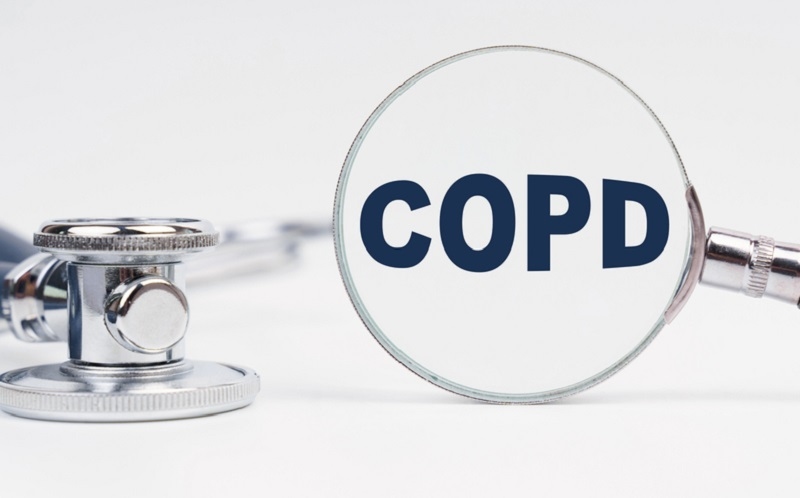
COPD Made Clear: Causes, Symptoms, and Treatment Options
Chronic obstructive pulmonary disease (COPD) is one of the most common lung conditions, yet it's often misunderstood. Many people don't realize they have it until breathing problems start interfering with daily life. Knowing what is COPD?, what causes it, how it shows up in the body, and the best options for COPD treatment can make a real difference in managing the disease and slowing its progression. Early awareness not only helps in easing symptoms but also prevents further lung damage. With timely treatment and lifestyle changes, people with COPD can still lead active and fulfilling lives.What Is COPD?To say it more plainly, COPD stands for Chronic Obstructive Pulmonary Disease and marks the advancement of chronic lung disease making breathing difficult. It encompasses two major conditions:Chronic bronchitis, defined as persistent airway inflammation and mucus production Emphysema, which is the destruction of the air sacs in the lungs, leading to decreased oxygen intake efficiencyWith proper treatment and management, people can control their COPD symptoms and live well, even though the damage done because of COPD is normally permanent.More to Explore: Learn Causes and Treatments for MS Hug in Multiple SclerosisCOPD Risk FactorsThe primary risk factor for COPD is cigarette smoking. Most of the diagnosed cases are attributable to a history of smoking, but COPD is not limited to smokers only. Up to 25% of people suffering from COPD are lifelong non-smokers.Other important risk factors for COPD include:Exposure to secondhand smoke.Occupational risks such as extended exposure to dust, chemicals, or industrial fumes.Pollution, both outdoor and indoor. In several developing countries, indoor smoke from wood, coal, or biomass fuels used for cooking is a significant risk factor.Inherited factors-especially alpha-1 antitrypsin deficiency, a rare disorder which predisposes to lung injury.While not everyone exposed to these risks develops the disease, they significantly raise the likelihood of COPD over time.COPD SymptomsCOPD does not develop overnight; it takes years of slow progression before the condition takes recognizable shape. The earliest symptoms of COPD might be attributed to "normal aging" or "simply being out of shape." It is imperative to catch COPD symptoms in the earliest stages of development because it enables a quicker diagnosis which positively changes the prognosis. COPD is associated with the following symptoms: Shortness of breath during any kind of physical exercise.Wheezing or breathing that sounds like whistling. Chest tightness.Fatigue and lack of energyIndividuals in the advanced stages of COPD notice frequent respiratory infections. Their ankles and feet might swell and shrink in size without the person trying to lose weight. People might also experience flare-ups that are periods of enhancement and even worsening of the COPD symptoms requiring emergency treatment. Diagnosing COPDThe following list outlines the methods doctors use to diagnose Chronic Obstructive Pulmonary Disease more accurately:Spirometry, an uncomplicated breathing test, measures the flow of air.Imaging tests, such as chest X-rays or CT scans, to evaluate the extent of lung damage.Blood test to evaluate oxygen level and eliminate other conditions.COPD can have severe implications and early diagnosis can change the outcome. With early detection, appropriate care and treatment can be given to the patient and therefore halt lung damage.Discover More: Understanding Symptoms and Treatment of Multiple MyelomaCOPD Treatment OptionsChronic Obstructive Pulmonary Disease (COPD)is a chronic inflammatory lung disease that causes obstructed airflow from the lungs, while there is no current cure for this disease, treatment for COPD primarily aims to relieve symptoms, decelerate the progression of the disease, and enhance quality of life. Depending on the stage and severity of the COPD, the type of treatment may include: 1. Lifestyle ChangesQuit smoking: This is the most crucial step for any person diagnosed with COPD. It reduces the rate of lung damage and improves the effectiveness of drugs.Avoid irritants: Try to avoid secondhand smoke, severe pollution, and workplace chemicals.Stay active: Engaging in consistent physical activity enhances stamina and the strength of respiratory muscles.2. MedicationsBronchodilators (both short- and long-acting) help ease breathing by relaxing the muscles around the airways.Inhaled corticosteroids address inflammation and work to reduce the frequency of exacerbations.Combination inhalers provide the advantages of both types of medication in a single delivery device3. Pulmonary RehabilitationSuch a rehabilitation program administers a systematic program that integrates physical training, dietary coaching, and breathing techniques. Patients participating in pulmonary rehabilitation tend to report fewer symptoms and greater life satisfaction. 4. Oxygen TherapySupplemental oxygen may be considered for those with dangerously low oxygen concentrations. Some patients may need it only during periods of activity while others may require it continuously.5. Surgical OptionsFor advanced cases, doctors may recommend:Lung volume reduction surgery to remove damaged lung tissue.Bullectomy to eliminate large, non-functioning air pockets.Lung transplant in severe cases when other treatments fail.How to Manage COPD DailyCOPD management skills are equally important as treatment. Individuals diagnosed with the disease can actively manage the symptoms and maintain their physical well-being by taking the following measures: Plan activities smartly: Simplify complex tasks and schedule adequate breaks. Perform breathing exercises: Pursed lip and diaphragmatic breathing techniques can effectively manage episodes of breathlessness.Follow a healthy diet: A proper diet helps in maintaining energy as well as the immune system.Take vaccines: Pneumonia as well as influenza vaccines help prevent respiratory infections, which can lead to severe exacerbations.Observe symptoms: Changes in breathing patterns, new feelings of tiredness, and any other new symptoms should be noted to inform a physician. Successfully managing COPD involves small yet consistent lifestyle changes alongside adhering to one's medications. New Treatments and ResearchMedicine for COPD patients has staved off earlier than expected, but now researchers have redirected their focus to new inhaled drugs, new biologic therapies, and even other minimally invasive procedures like bronchoscopic lung volume reduction. As researchers strive to bring new treatments, their primary concern is to increase lung function, decrease exacerbations, and ensure better long-term results.Living With COPDLiving with COPD requires both determination and a good amount of inner strength. The condition is longtime; however, with a good treatment plan, people suffering from it can still enjoy life to the fullest. Support groups, counselling, and pulmonary rehabilitation offer help not only for the physical aspects but also for the emotional aspects of treatment. Remaining proactive and well-informed helps the most in dealing with the numerous challenges of COPD. You may also like to explore: Common Signs And Ways Of Identifying Rosacea and it's causesFinal ThoughtsMillions suffer from COPD, but careful management and educational resources can help a great deal. By understanding what is COPD? means and its risks and causes, being able to identify the symptoms of COPD early, and adhering to an effective treatment plan for COPD, patients and healthcare providers can work in tandem to improve patients' quality of life.The prognosis of a patient with COPD significantly improves with appropriate changes in lifestyle, correct medications, and the right kind of sustained support. With the right kind of intervention, patients with COPD can live an active and fulfilling life since the disease is effectively manageable, even though it is incurable, as life with COPD is very much manageable with the right approach

Learn About Cold vs Heat Therapy for Back Pain in 2025
Backache is one of the prevalent health complications in the modern world. Most people have experienced that twinge in the lower back, either due to sitting at the desk too long, lifting something heavy, or simply having slept in the wrong position. Fortunately, some easy and low-priced options help to ease it at home. Cold and heat therapy is one of the most preferred ways of treating backaches. Why is one better than the other? This blog will go through the cold therapy and heat therapy, when to use them, and how to select the best therapy to use in the management of back pain in 2025.Understanding the Basics of Cold and Heat TherapyCold and heat therapy should bring relief from back pain, but vary in the mechanisms involved. In the case of back pain, all the types have their advantages and may differ in the cause and nature of the pain.What is Cold Therapy for Back Pain?The ice or cold packs are a method of cold therapy used to diminish the swelling, inflammation, and pain. It acts by constricting blood vessels, thus reducing the rate of blood flow to the affected region. This assists in the reduction of swelling and also numbs sore tissues. The means of therapy for the common cold are as follows:Ice packsCold gel packsFrozen vegetables wrapped in a towelCold sprays or patchesCold therapy is especially helpful in the first 24-72 hours after an injury.What is Heat Therapy for Back Pain?Heat therapy, also known as thermotherapy, works by increasing blood flow to the area, which helps muscles relax and promotes healing. It can ease stiffness and soreness by making the tissues more flexible. Common heat therapy methods include:Hot packs for back painHeating padsWarm towelsWarm baths or hot showersInfrared heat beltsHeat therapy is often used for chronic back pain or muscle tightness.When Should You Use Cold Therapy?Cold therapy is best for acute injuries-those that happened recently. If you've just pulled a muscle or strained your back, using something cold can stop swelling and reduce pain.Cold Therapy Works Best for:Recent back injuries (within 48 hours)Sudden pain due to overuse or lifting something heavyRed or swollen areasSports-related injuriesHow to Apply Cold TherapyWrap a cold pack or frozen item in a thin towel.Apply to the sore area for 15-20 minutes.Repeat every 2-3 hours for the first couple of days.Cold Therapy TipsNever place ice directly on the skin-it can cause frostbite.Limit each cold therapy session to 20 minutes.If you feel numbness or pain during application, stop immediately.Cold therapy is great when you need fast relief from pain and swelling after an injury. It helps "calm things down" before moving on to other forms of care.When Should You Use Heat Therapy?Heat therapy is ideal for long-term (chronic) back pain or tight muscles. If you often wake up with stiffness or have pain that builds up slowly, heat can offer great comfort.Heat Therapy Works Best for:Chronic back painMuscle tightness and stiffnessStress-related muscle achesArthritis-related discomfortHow to Apply Heat TherapyUse a hot pack for back pain or an electric heating pad.Apply it to the painful area for 20-30 minutes.Use 2-3 times daily for ongoing relief.Heat Therapy TipsAlways keep a layer (like a towel) between your skin and the heating pad.Avoid falling asleep while using heat therapy.If you feel any burning or irritation, stop right away.Heat therapy helps increase flexibility, reduce stiffness, and prepare muscles for movement or exercise.Combining Cold and Heat Therapy for Back PainIn many cases, using both cold and heat therapy for back pain can be the most effective strategy. Cold therapy helps in the early stages of injury, and heat therapy helps later with muscle healing and relaxation.A Smart Routine:Day 1 to 3 (Acute Pain Stage): Use cold therapy to reduce swelling.Day 4 and Beyond (Recovery Stage): Switch to heat therapy to improve mobility and ease tightness.After Exercise or Movement: Use cold therapy again if you feel sore or inflamed.This combination method allows you to treat both inflammation and stiffness in one complete back pain treatment routine. Best Therapy for Back Pain: What to Choose in 2025?Choosing the best therapy for back pain depends on your specific situation. Ask yourself these questions:1. Is the Pain New or Old?New pain or injury? Go with cold therapy first.Ongoing or long-lasting pain? Use heat therapy.2. Is the Area Swollen or Tight?Swelling? Cold packs work better.Tightness or stiffness? Heat therapy is more helpful.3. Do You Have an Active Lifestyle?Use cold therapy after intense workouts or heavy lifting.Use heat therapy before stretching or exercise to warm up the muscles.In 2025, many modern hot and cold packs are designed for convenience. You can buy reusable packs that work in the microwave or freezer.Back Pain Treatment Tips Beyond Hot and Cold TherapyWhile cold and heat therapy are very useful, they're just one part of a larger plan to keep your back healthy. Here are some extra back pain treatment tips you can follow:Exercise and StretchingRegular movement helps prevent stiffness.Stretch your back, hamstrings, and hips daily.Try low-impact activities like walking, yoga, or swimming.Good PostureAvoid slouching while sitting or standing.Use a chair with proper back support.Keep your feet flat on the floor when working or studying.Sleep SmartUse a firm mattress for better back support.Sleep on your side with a pillow between your knees.Avoid sleeping on your stomach, which can strain your spine.Try Massage or Physical TherapyMassage therapy helps ease muscle tension.A physiotherapist can teach you stretches and exercises to reduce pain.New Advancements in Heat and Cold Therapy in 2025Technology is making back pain relief even easier in 2025. Here are some new tools people are using at home:Smart Heating PadsThese come with adjustable temperatures and timers.Some models connect to smartphone apps for better control.Portable Cold Therapy WrapsBattery-powered wraps that stay cold for hours.Great for people who need to move around while treating their back.Final ThoughtsIn summary, the cold and the heat therapy of back pain have their importance when it comes to the kind and phase of discomfort. Use of cold is best suited to treat inflammation and swelling associated with the initial stages of an injury, whereas heat therapy can be used to treat stiffness and assist the progress of some long-term or chronic pains. Effective treatment plans at the right time or a combination of both can go a long way in restoring you and keeping you comfortable. With technology and advancements in technology gaining momentum in the year 2025, more effective and newer tools are making the treatment of back pain even more convenient at home. Cold and heat therapies are one of many ways to become a part of your regular back care routine, along with good postures, healthy habits, and regular exercise.

Multiple Sclerosis Diet: Best Foods to Support Your Body
Let's get one thing straight: food isn't going to cure your MS. But if you're not using your diet as a weapon in your fight against this condition, you're missing out on a major advantage. A well-structured multiple sclerosis diet plan won't replace your meds - it'll work with them. Think of it as fuel for your brain, your body, and your energy reserves when MS decides to throw one of its unpredictable tantrums.If you've been Googling terms like "best diet for multiple sclerosis" or wondering whether the ketogenic diet for multiple sclerosis actually works or is just another overhyped trend, stay with me. We're cutting the noise, skipping the pseudoscience, and zeroing in on real, research-backed foods that should live in your kitchen - and your plate - every day.First, Why Bother with a Multiple Sclerosis Diet?Because inflammation, fatigue, brain fog, and nerve degeneration don't stand still. They evolve. And so should your strategy. The link between diet and multiple sclerosis isn't woo-woo wellness - it's real science. Chronic inflammation drives MS progression. The right diet helps cool that fire down.A good diet for multiple sclerosis can:Lower inflammationImprove gut healthHelp manage fatigue and brain fogKeep your weight steadyMake flare-ups less brutalDon't Miss: Learn Causes and Treatments for MS Hug in Multiple SclerosisBest Foods to Include in Your Multiple Sclerosis Diet PlanLet's talk about what belongs in your multiple sclerosis diet plan and what should be kicked to the curb.1. Fatty Fish - Real Omega-3 Power, Not HypeForget the capsules and overpriced supplements. If you're serious about an anti-inflammatory lifestyle, you need real food sources of omega-3s. Fatty fish like:SalmonMackerelSardinesTuna...should be in your grocery cart. Omega-3s reduce inflammatory cytokines and support nerve cell membranes. The multiple sclerosis diet isn't about eating like a rabbit - it's about being strategic.Minimum: 2 servings per week. Grilled, baked, or pan-seared.2. Leafy Greens + Cruciferous Veg = Brain FuelWhen it comes to diet and multiple sclerosis, antioxidants are non-negotiable. They neutralize free radicals that accelerate nerve damage. Where do you get them? Dark, leafy, nutrient-dense greens.Put these on rotation:SpinachKaleSwiss chardBroccoliBrussels sproutsCauliflowerCruciferous vegetables contain sulforaphane - a compound that's basically a fire extinguisher for inflammation. And if brain fog is your daily battle, the folate and vitamin K in leafy greens will help clear the mental haze.Steam lightly or toss in olive oil. No, iceberg lettuce doesn't count.This is how you eat to think, move, and feel better - consistently.3. Whole Grains = Long-Lasting Energy Without the CrashYou don't need to go carb-free to tame MS. You need to ditch stupid carbs. Say goodbye to white bread, sugary cereals, and processed snacks. What you want are high-fiber, slow-burning carbs that feed your gut and keep your blood sugar stable.Best picks:QuinoaBrown riceSteel-cut oatsBuckwheatBarleyThese aren't just about energy. A healthy gut = a healthier immune system. And the gut-brain connection? It's very real. Any good multiple sclerosis diet plan should start from the inside out.Aim for 3-5 servings a day. Skip the gluten if it makes your symptoms worse - some people do better without it.4. Berries and Fruits That Actually Do SomethingNot all fruit is created equal. You want the ones with high antioxidant value, not the sugary ones that spike your glucose. Focus on:BlueberriesRaspberriesCherriesBlackberriesPomegranatesOranges (for vitamin C and potassium)These fruits help lower oxidative stress - the kind that wrecks nerve cells. And they're naturally anti-inflammatory, which makes them essential for any solid diet for multiple sclerosis.One to two servings daily is enough. Make sure they're real, not juice.And no, dried fruit doesn't count unless it's unsweetened and in small amounts.5. Lean Protein + Plant-Based AlternativesDon't go low-protein. That's not helping your fatigue or muscle strength.Go for:ChickenEggsTurkeyTofuLentilsBlack beansPlant-based proteins come with fiber and antioxidants. If you eat red meat, make it grass-fed and occasional.Protein = every meal. Keep it clean.6. Healthy Fats (That Don't Destroy Your Nerves)Say goodbye to processed oils and butter overload. Say hello to:AvocadosOlive oil (extra virgin)AlmondsWalnutsPumpkin seedsTahiniThese fats reduce bad cholesterol, support cognitive function, and help fight inflammation. And yes, they actually taste good. Want the best diet for multiple sclerosis? You need fats that work for you, not against you.Add these to smoothies, salads, or eat them straight. Fat is not your enemy - garbage fat is.7. Fermented Foods: Your Gut's New Best FriendThe research is clear - your gut plays a huge role in immune regulation. And guess what's compromised in MS? Your immune system. So, feed your microbiome like your life depends on it (because, kind of, it does).Best fermented foods:Greek yogurt (with live cultures)KefirKimchiSauerkrautMisoTempehProbiotics reduce inflammation, improve digestion, and enhance mood. If your multiple sclerosis diet plan doesn't include probiotics, you're missing out on a major support system.Don't like fermented foods? Get a high-quality probiotic supplement. But talk to your neuro first.8. Hydration, Minus the Sugar and CrapWater is boring, sure. But dehydration makes MS symptoms 10x worse. Dizziness, fatigue, brain fog? All amplified if you're not hydrating.Other solid options:Herbal teas (ginger, peppermint, green tea)Coconut water (unsweetened)Infused water with cucumber, lemon, mintSkip the soda, energy drinks, and excessive coffee. And alcohol? Test it for yourself. Some people with MS tolerate it. Many don't. Trust your body.8-10 cups of fluid a day. No excuses.Hydration isn't optional. It's your daily maintenance tool.What About the Ketogenic Diet for Multiple Sclerosis?The ketogenic diet multiple sclerosis connection is real. This high-fat, low-carb approach forces your body to burn ketones instead of glucose.Benefits reported in studies:Improved brain energyLower inflammationReduced fatigueA 2019 study in Frontiers in Neurology showed real improvement in MS symptoms on keto. But this plan isn't one-size-fits-all. Get medical input before jumping in.Keto-friendly MS foods: eggs, greens, avocado, salmon, olive oil, cauliflower, coconut.You may also like: 10 Lifestyle Hacks For Managing Multiple SclerosisFoods That Make Things WorseIf you want your multiple sclerosis diet plan to actually work, cut the garbage:Processed meatsFried foodSugary snacksSodaExcess dairyWhite carbsFast foodKeep it real, whole, and unprocessed.Sample MS Diet PlanBreakfastEggs + spinachGluten-free toast + avocadoHerbal teaLunchGrilled salmon saladOlive oil dressingQuinoa + berriesSnackYogurt + flaxseed ORHummus + cucumbersDinnerLentil stewSautéed kaleCauliflower riceDessert1 square dark chocolateFinal WordThere's no magic food, but there's power in your plate. The right multiple sclerosis diet can help you fight smarter. Whether it's the Mediterranean path, a plant-heavy routine, or even the ketogenic diet for multiple sclerosis, stay consistent.Eat with purpose. Eat to function better. Because every bite matters.
Welcome to your new comprehensive resource on injectable drugs and medications. Explore the vast array of treatments available, from pain management to disease therapies. Discover the benefits, dosage information, and potential side effects of these pharmaceutical wonders. Trust in our expertise to provide you with valuable insights and empower your healthcare decisions.
